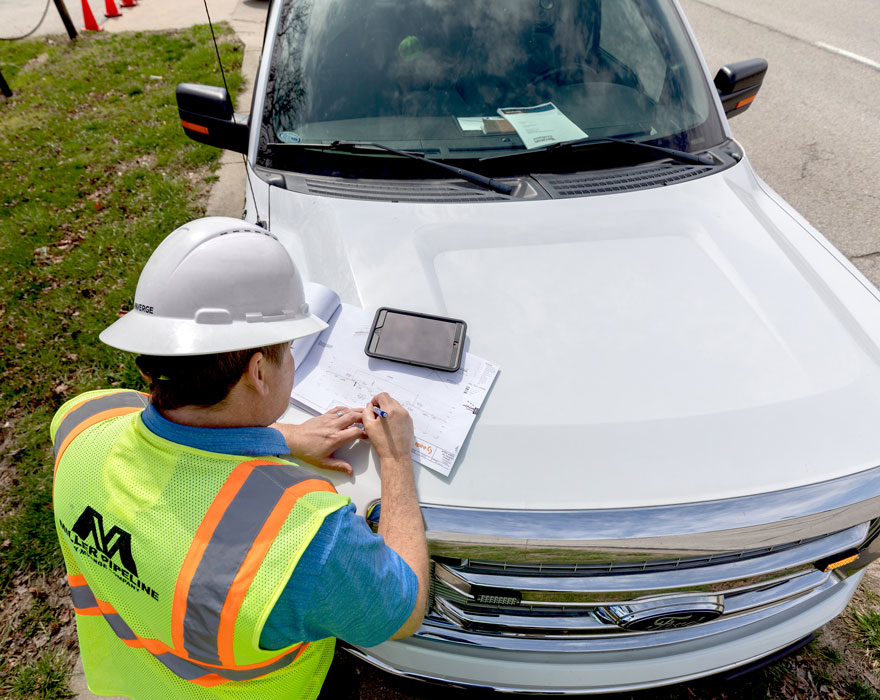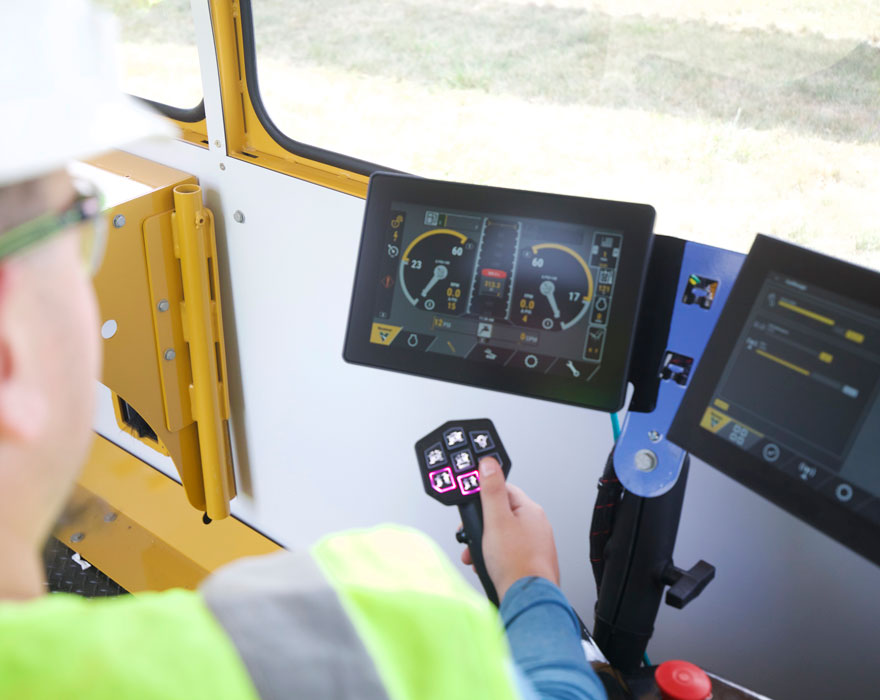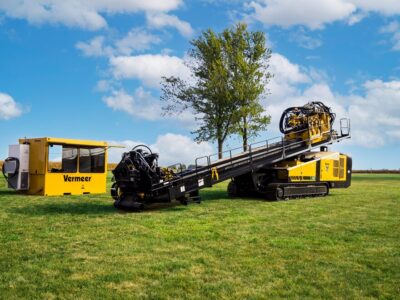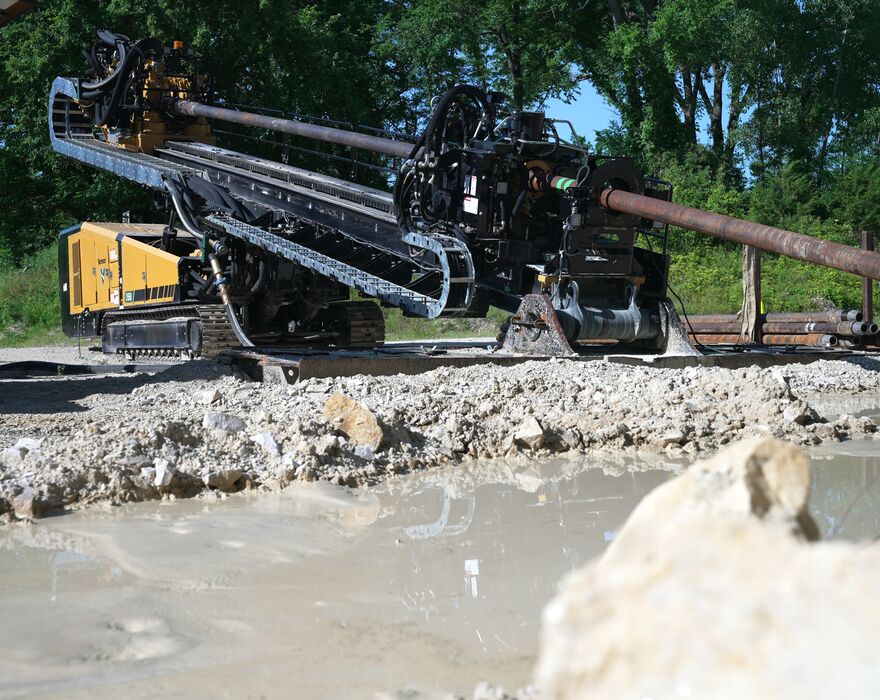Even in today’s strong horizontal directional drilling (HDD) market, contractors always face a certain amount of risk when investing in new machinery. Purchasing a maxi rig-sized drill can be a substantial investment that may open new markets for a HDD contractor. However, contractors must look beyond their current workload and forecast how a maxi rig will continue to be a valuable piece of machinery for many years.
Vermeer Pipeline Solution Specialist Kelly Beller and Vermeer Pipeline Sales Manager Andy Bremner have helped numerous HDD companies worldwide determine the ideal maxi rig for their current and future needs.
“Buying a maxi rig can be a complex process,” said Bremner. “Since large-diameter and long-distance HDD work is more specialized than most utility work, there are not as many large drills being produced. Contractors must plan how they will use that drill after their early forecasted projects are completed.”
All this planning starts with identifying when a contractor should consider buying a maxi rig and determining the appropriate machine size, the type of work and where it will be performed, and how onboard technology can help crews work more efficiently.

When to buy a maxi rig
“Contractors that stay busy are always looking for the next project to bid on,” said Beller. “Since every bid follows different requirements and timelines, it can be challenging to coordinate where a maxi rig needs to be at all times. Sometimes, a project is waiting for a big drill to be delivered, so they may start with a smaller machine to do the pilot bore and then swap it out before reaming begins. Other times, drills may be sitting idle, waiting for the next project to start. Ideally, the right maxi rig would be available when needed, but that rarely works out.”
Beller suggests contractors take a more proactive approach to buying a maxi rig. Instead of letting project demands dictate the equipment needed, contractors should take on projects based on their equipment fleet.
“If a contractor is looking to grow or diversify the type of work they are doing, they should bid on those types of projects, research and buy the appropriate size maxi rig to do the work, and then get their sales team out there bidding on similar work so they can keep that drill busy for years to come,” said Beller.
Of course, not every new maxi rig purchase involves taking on more challenging projects. Sometimes contractors may have their drills spread out on too many projects. Buying an additional maxi rig makes sense if this trend is delaying work from starting and hampering the company’s productivity.
What size maxi rig to buy
Maxi rig drills are available in various sizes and configurations, allowing contractors to select the one that best suits their needs. However, choosing the right maxi rig can be a more involved process for contractors looking to grow their business or diversify.
Bremner says, “Many utility contractors looking to distinguish themselves from others doing fiber installation work will bid on projects that require a 100,000-lb (45,356-kg) rig like the Vermeer D100x140 S3 HDD.” This drill is suitable for contractors looking to expand into water, sewer, and natural gas installation work. As they gain experience in this area, many will seek ways to tackle even more challenging bores with the same unit. However, productivity can eventually be impacted, and they will have to decide whether to go bigger or work their drill harder.
At some point, it becomes more efficient to invest in a larger maxi rig like the Vermeer D220x500 S3 HDD, whether due to more challenging ground conditions, longer bore shots or larger-diameter products.
“Contractors need to balance output and efficiency,” said Beller. “Running a maxi rig at near maximum capacity for extended periods can lead to more involved preventive maintenance and reduced productivity. Although this may be acceptable for occasional projects, buying a larger maxi rig is a better decision for many contractors.”
Employing a larger maxi rig also has other advantages in terms of drilling efficiency.
“A larger unit can potentially be more productive on the pilot bore, helping contractors minimize the number of reamer passes required for a project,” Beller explained. “This could result in completing the project in less time and reducing disturbance to the local population.”
Of course, not every project site has room for a larger machine, and a contractor’s hauling costs may also increase. Beller said these are the trade-offs contractors must consider when purchasing a maxi rig.
Diversifying markets
Another future consideration for contractors buying a new maxi rig is market diversification. With a downturn in the oil and gas pipeline industry, many contractors are exploring ways to diversify into emerging markets.
Bremner suggested contractors explore opportunities in sectors like hardening electrical transmission lines; installing renewable energies; and replacing or expanding water, sewer, natural gas and carbon capture infrastructure.
Examining machine-intelligent features
When deciding whether to add new equipment to a fleet, contractors should consider the machine’s intelligent features. According to Beller, the Vermeer D550 HDDs onboard telematics provide service technicians and drill operators with important diagnostic information, and it is equipped with controls similar to those of a Vermeer utility-sized HDD drill.
“In a tight labor market, an intuitive maxi rig like the D550 can be a good investment,” said Bremner. “It’s designed to feel like operating a small drill and has machine-intelligent features like AutoDrill modes.”

Future considerations for maxi rig purchases
When purchasing a maxi rig, contractors should consider their current needs and future projects. They should weigh the benefits of using a larger rig against the potential drawbacks, such as increased transport costs. In addition, they should consider the machine’s intelligent features and how it can boost productivity and ease of use.
Furthermore, contractors should consider diversifying into emerging markets to allow their rigs to be utilized and continue generating revenue.
If you need help with the details of buying a maxi rig drill, contact your local Vermeer dealer.
Vermeer Corporation reserves the right to make changes in engineering, design and specifications; add improvements; or discontinue manufacturing at any time without notice or obligation. Equipment shown is for illustrative purposes only and may display optional accessories or components specific to their global region. Please contact your local Vermeer dealer for more information on machine specifications.
Vermeer and the Vermeer logo are trademarks of Vermeer Manufacturing Company in the U.S. and/or other countries. © 2023 Vermeer Corporation. All Rights Reserved.

